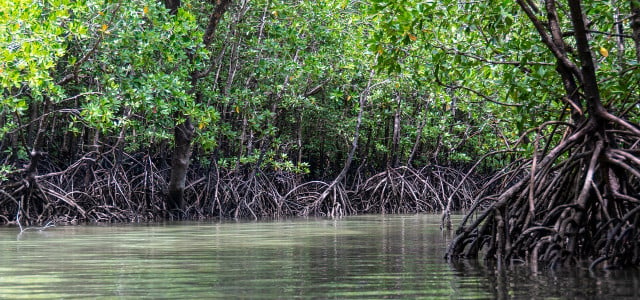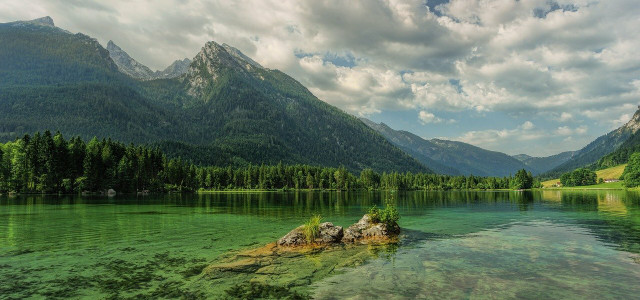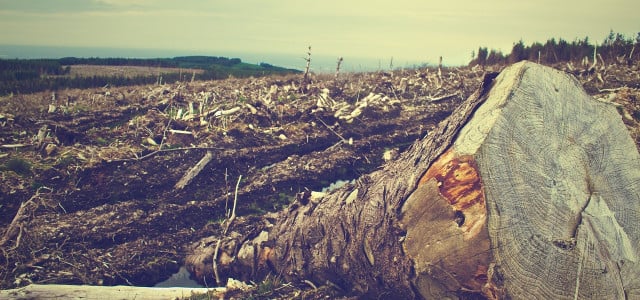You may be familiar with their iconic roots, but might not know what mangroves are. Read on to learn more about this unique tree and ecosystem.
Mangroves are coastal trees that grow in tropical regions, most easily recognizable by their distinctive stilt-like roots. These trees are likewise unique in that they are among the only trees that grow in saltwater, forming their own ecosystems within intertidal zones. In fact, when asking “what are mangroves,” we can get three different answers: the specific mangrove tree species, the ecosystem they create (the mangrove forest), or as a generic term for any similar tree that can also survive in this habitat.
Most mangrove forests are located in the tropics and subtropics, with the largest concentrations being found in Southeast Asia and coastal Bangladesh. In the United States, mangrove forests grow along the Gulf Coast and Florida, but have the potential to proliferate northward should climate change lead to warmer waters.
Importance of Mangroves
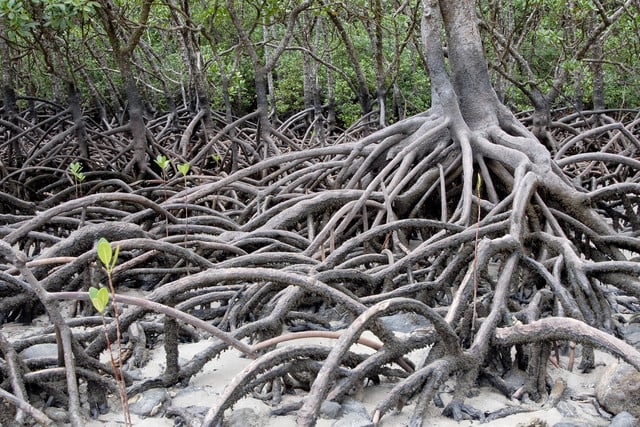


When trying to figure out what mangroves are, it’s essential to know why they are so important to the ecosystem. The unique structure and saltwater habitat of the mangrove means that forests provide several benefits to both the ecosystem, local communities, and even the global climate. Here are some reasons why mangroves are so important:
- Prevents erosion by stabilizing sediments with their roots. They can also blunt ocean waves and prevent flooding during storm surges.
- Removes pollution through their dense root systems by filtering out particles in the water.
- Help conserve freshwater by filtering salt water. Many species rely on freshwater.
- Productive habitats are created in mangrove forests, which provide shelter to several different species of birds, mammals, and fish.
- Economically significant, as many fish and crustaceans are caught or farmed here.
- Effective carbon sinks, absorbing carbon and fixing it underwater where it cannot combine with oxygen to form CO2. In fact, mangroves are more effective in carbon sequestration than any other forest. This means mangroves are also a slow-forming source of peat.
What are Mangrove Threats?
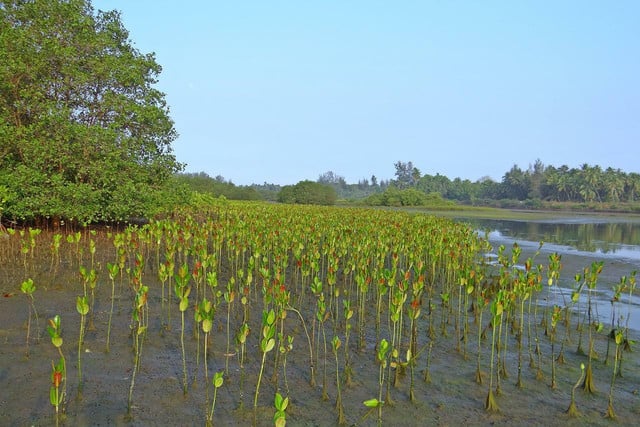


The two main threats to mangrove forests are deforestation and climate change. As many as 16 percent of mangrove species are now at risk of extinction, most of which are located in Central America.
Deforestation
Although deforestation has slowed in recent years, as much as 35 percent of Asian mangrove forests were lost in the 1980s and 1990s. While some mangrove area has been developed into residential areas, much of the deforestation is due to plantations of palm oil, rice, or fish farms.
Climate Change
What are mangrove forests going to look like in the future? Although some research suggests that warmer temperatures and higher sea levels may expand mangrove habitats, the reality is more complicated. Higher temperatures can increase water salinity, which will kill mangroves. Rocky or elevated coastlines may also prevent new mangroves from replacing those that die as a result of being submerged under rising rea levels. Increased storminess can destroy existing trees while also destabilizing the muddy sediment necessary for them to take root.
Protecting Mangroves: Here’s What You Can Do
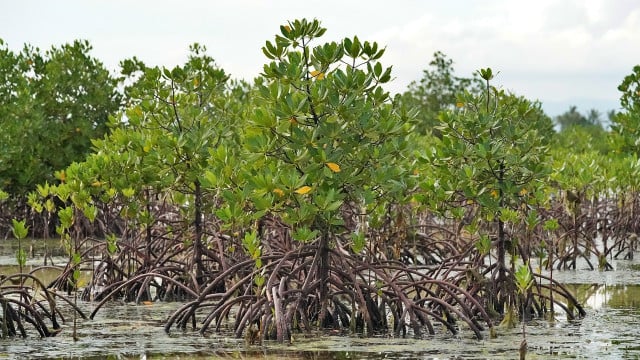


Although mangroves are quick to take root when conditions are perfect, rehabilitation through planting is an unreliable solution, with success rates as low as 10-20 percent. Here are some small things you can do to protect existing mangroves:
- Try going vegan or vegetarian and be mindful of where your rice comes from. Most deforestation of mangroves is due to development of fish farms or rice plantations.
- Try some clever ways to reduce your carbon footprint: since mangroves will likely suffer from rising temperatures and sea levels, taking a holistic approach to be more eco-friendly can help.
- Reduce your plastic intake. Mangrove roots can act as a net to collect plastic pollution in the oceans, which can harm the entire forest.
Read more:
- What Causes Floods & How Does Climate Change Contribute?
- The Amazon is up in Flames – 9 Things You Can Do
- Coral Bleaching: Why Reefs Are Dying – and How to Help
Do you like this post?






